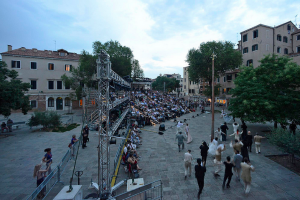VENICE AND THE GHETTO Vexing Questions
Four centuries after it was written and first staged, The Merchant of Venice continues to cast a long shadow. It is a deeply enigmatic work of art, raising many more questions than it answers. Is the disguised Portia’s question upon entering the courtroom— “Which is the merchant here, and which the Jew?”—to be taken seriously or intended as a laugh-line? Do we follow the 1623 Folio text when Gobbo says of Jessica that “If a Christian do not play the knave and get thee, I am much deceived,” or the text of the 1632 Folio, where that “do” is altered to “did” (a reading preferred by many modern editors, one that suggests that Shylock has been cuckolded and Jessica’s real father was a Christian)? Is Portia a racist for saying of her unsuccessful wooer, a dark-skinned and Muslim Moroccan prince, “Let all of his complexion choose me so”? Is Antonio “so sad” because of his financial worries or because his unsanctioned love for Bassanio is unrequited? Is the play troubling because its portrayal of Shylock is nakedly anti-Semitic? Or, alternatively, is it so disturbing because it exposes what ugly myths lead those with insecure identities—Gentile or Jew–to think and do when threatened, and for intimating that hostility to difference of all kinds (racial, national, sexual, or religious) deforms those who are intolerant and coarsens any society that condones it? Each production or rereading of this haunting play challenge us to wrestle yet again with these and many other vexing questions.
*James Shapiro a professor at Columbia University. This article was published in the booklet by Ca’ Foscari University of Venice, Compagnia de’ Colombari and Committee for the 500 years of the Ghetto on the occasion of the new production of “The Merchant of Venice” performed for the first time in the Ghetto. The picture is by Giovanni Montenero

